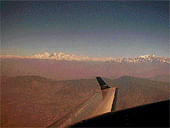
Sri Lanka has a sizeable elephant population, which has been under threat in recent times despite the fact that it is revered in Buddhist culture.
The elephant’s omnipresence in Sri Lankan culture is evident. Its tusks are considered sacred. They are used in religious ceremonies, processions and pageants. Their images are found on temple walls and ceilings, paintings, sculptures, woodwork, batik work and craft work.
It is only in recent times that elephants have become victims of human cruelty. They are mainly killed and often wounded simply because they come across human habitation and destroy crops. Their voracious appetite means that elephants and people cannot live together where land use is predominantly for agriculture, unless the damage caused by elephants to farmers is compensated.
Eco-friendly solution
However, an eco-friendly solution has been found for this man-elephant conflict through which the farmer in the periphery of the forests can co-exist with elephants and at the same time make a living. All thanks to elephant dung which is increasingly used to make paper and other products. By turning elephant dung into a source of revenue, the farmers no longer want to kill the elephants and can learn to co-exist with the elephant.
Elephant dung is an end product freely available at anytime. NGO units engaged in the manufacture of paper pay villagers for collecting the dung. The elephant dung is collected and sun-dried. On average, an adult elephant produces about 180-200 kg of dung per day (as many as 15 times a day). Until recently, no one had any use for it. The dung is now used to produce paper which comprises 75 per cent elephant dung and the rest fibrous natural material. Waste products that are often just thrown away are now used in making paper. For example, rice paddy straw, cinnamon leaves, dried banana bark and leaves, bamboo leaves, palmyra leaves and jackfruit leaves all of which grow abundantly in Sri Lanka.
The vegetarian elephant eats coconut leaves, jackfruit leaves, palmyra leaves and other vegetation rich in fibre.
The elephant performs the first stage of any paper-making process: getting the fibres.
Elephant dung is largely fibre. One elephant provides enough dung to make 115 to 120 sheets of paper.
Elephant dung along with other fibrous material is boiled at 100 degree centigrade with a natural disinfectant - margosa leaves. It is washed and blended mechanically for uniformity.
The pulp in vats is hand-lifted and spread on a couching table or board in the form of a thin sheet. The paper produced from elephant dung can be coloured with vegetable dye during the paper-making process. The paper is acid-free and has no odour.
Hugely popular products
The products from elephant dung includes paper, note books, greeting cards, wedding cards, bookmarks, badges, boxes, paper bags, photo frames and albums.
Craft items are also prepared by using moulds. These eco-friendly products have proved popular among both the local population and foreign tourists, for whom it is a novelty.
In 2002, during a visit to Washington, former Sri Lankan prime minister Ranil Vikramasinghe, presented the then American President George Bush with a box of personalised stationery including paper, envelope and cards all made from elephant dung in an effort to promote eco-friendly paper products. The elephant, incidentally, is the symbol of Bush’s Republican Party.
Such paper is also made in Thailand, where elephants are domesticated and used for work.